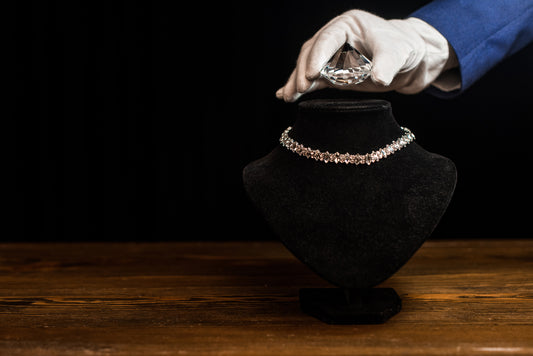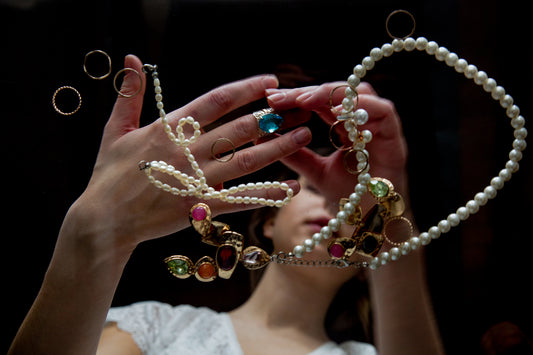Buying a diamond can be an exciting experience, but with the rise of lab-grown diamonds, making an informed choice is more important than ever. Whether you're drawn to the timeless appeal of natural diamonds or the affordability of lab-grown options, let's explore the key differences to help you find the perfect diamond for your needs and values.
What's the Difference? The Science Behind Diamonds
-
Natural Diamonds: Formed by Nature Natural diamonds are miracles of geology, crafted deep within the Earth over billions of years under immense pressure and heat. Their journey to the surface is often through volcanic eruptions, lending them an aura of both power and rarity.
-
Lab-Grown Diamonds: Created by Science Lab-grown diamonds are the product of cutting-edge technology, replicating the conditions necessary for diamond formation in a controlled laboratory environment. There are two primary methods: * HPHT (High Pressure, High Temperature): This process closely mimics the forces within the Earth that create natural diamonds. * CVD (Chemical Vapor Deposition): This method involves layering carbon atoms onto a diamond "seed" in a vacuum chamber
-
The Key Takeaway: No matter their origin, both natural and lab-grown diamonds possess the same physical, chemical, and optical properties. Expert gemologists require specialized equipment to tell them apart.
Lab-Grown Diamonds: Pros & Cons
-
Pros:
- Affordability: Lab-grown diamonds often cost significantly less than natural diamonds of comparable size and quality.
- Ethical Appeal: Lab-grown diamonds don't involve mining practices, which can have environmental impacts or be connected to conflict zones.
- Consistent Quality: Lab environments offer greater control, sometimes resulting in fewer inclusions in lab-grown diamonds.
-
Cons:
- Uncertain Long-term Value: Since lab-grown diamonds are relatively new, their resale value and long-term value aren't as established as natural diamonds.
- Mass Production: The ability to mass-produce lab-grown diamonds can potentially diminish their sense of uniqueness for some buyers.
Natural Diamonds: Pros & Cons
-
Pros:
- Timeless Value: Natural diamonds have held value and desirability for centuries, making them ideal heirloom pieces passed down through generations.
- Earth's Treasures: Each natural diamond is unique, a testament to the Earth's raw power and a story billions of years in the making.
- Emotional Significance: Natural diamonds often symbolize deep emotions, milestones, and a connection to the natural world.
-
Cons:
- Higher Cost: Generally, natural diamonds have a higher price tag compared to lab-grown diamonds of similar characteristics.
- Ethical Sourcing: Ensuring your natural diamond comes from a mine with ethical practices and environmental responsibility is crucial.
Price Comparison Table
| Characteristic | Natural Diamond | Lab-Grown Diamond |
|---|---|---|
| Color | D-Z (Colorless to Light Yellow) | D-Z (Colorless to Light Yellow) |
| Cut | Ideal - Poor | Ideal - Poor |
| Clarity | FL - I3 (Flawless to Included) | FL - I3 (Flawless to Included) |
| Hardness | 10 (Mohs Scale) | 10 (Mohs Scale) |
| Approx. Price (1 Carat) | $5,000 - $15,000+ | $2,000 - $5000 |
- Note: Prices are approximate and fluctuate based on current market conditions.
Which Diamond is Right for You?
The ultimate decision rests on what matters most to you:
- Budget-Conscious Beauty: If affordability is your top priority, lab-grown diamonds offer undeniable sparkle that's easier on the wallet.
- Heirloom & Symbolism: If you desire a diamond with historical value, emotional resonance, and the potential to become a treasured family heirloom, a natural diamond is often the perfect choice.
- Ethical Considerations: Both lab-grown and natural diamonds have pathways to ethical acquisition. Lab-grown diamonds appeal to those concerned about traditional mining practices. For natural diamonds, look for reputable jewelers who transparently source gems from conflict-free zones and prioritize environmental sustainability.
The Best of Both Worlds: Combining Diamonds
Interestingly, some jewelry pieces combine lab-grown and natural diamonds. Accent stones in a setting might be lab-grown to reduce cost, while a stunning natural diamond remains the centerpiece. This can be a creative and budget-friendly solution.




